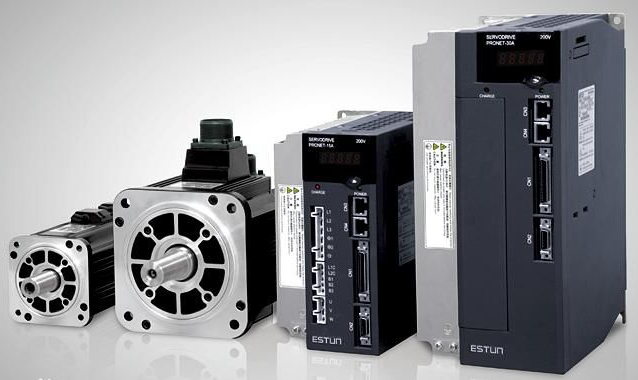What is a motor?

An electric motor is a device that converts electrical energy into mechanical energy. It uses energized coils (i.e. stator windings) to generate a rotating magnetic field and applies it to the rotor (such as a squirrel cage closed aluminum frame) to form a magnetic electric rotational torque. Electric motors are divided into DC motors and AC motors according to the different power sources used. Most electric motors in the power system are AC motors, which can be synchronous motors or asynchronous motors (the stator magnetic field speed and rotor rotation speed of the motor do not maintain synchronous speed). The electric motor is mainly composed of a stator and a rotor, and the direction of force movement of the energized wire in the magnetic field is related to the direction of the current and the direction of the magnetic field lines (magnetic field direction). The working principle of an electric motor is that the magnetic field exerts force on the current, causing the motor to rotate.
Invention process
The electric motor uses the principle of the force acting on an electrified conductor in a magnetic field (which is different from the magnetic effect of electric current, and the current People’s Education Press ninth grade physics clearly separates the two). The discovery of this principle was made by Danish physicist Oster, born on August 14, 1777, in a pharmacist family in Rudjobin, Langlong Island. In 1794, he was admitted to the University of Copenhagen and obtained his doctoral degree in 1799. From 1801 to 1803, he visited countries such as Germany and France and met many physicists and chemists. From 1806, he served as a professor of physics at the University of Copenhagen, and from 1815, he became the Executive Secretary of the Royal Danish Society. In 1820, he was awarded the Copley Medal of the Royal Society of England for his outstanding discovery of the electric current magnetic effect.
Since 1829, he has served as the dean of the Copenhagen Institute of Technology. He passed away on March 9, 1851 in Copenhagen. He has conducted extensive research in physics, chemistry, and philosophy. Due to the influence of Kant’s philosophy and Schelling’s natural philosophy, I firmly believe that natural forces can be transformed into each other, and have long explored the connection between electricity and magnetism. In April 1820, the effect of electric current on magnetic needles, namely the magnetic effect of electric current, was finally discovered. On July 21 of the same year, he published his findings under the title “Experiment on the Electrical Conflict Effect on Magnetic Needles”. This short paper caused a great shock in the European physics community, leading to the emergence of a large number of experimental results and thus opening up a new field of physics – electromagnetism.
In 1812, he first proposed the idea of the connection between light and electromagnetism. In 1822, he conducted experimental research on the compressibility of liquids and gases. Aluminum was refined in 1825, but its purity was not high. In acoustic research, he attempted to discover the electrical phenomena caused by sound. His last research work was on diamagnetism. He is a passionate teacher who values scientific research and experimentation. He said, “I don’t like boring lectures without experiments. All scientific research starts with experiments.” Therefore, he is popular among students. He was also an outstanding speaker and natural science popularizer. In 1824, he initiated the establishment of the Danish Association for the Promotion of Science and created Denmark’s first physics laboratory. In 1908, the Danish Association for the Advancement of Natural Sciences established the “Oster Medal” to recognize physicists who made significant contributions. In 1934, the unit of magnetic field strength in the CGS system was named “Oersted”. In 1937, the American Association of Physics Teachers established the “Oster Medal” to reward physics teachers who made contributions to physics teaching.
In 1821, Faraday completed his first major invention of electricity. Two years ago, Oster had discovered that if there was current passing through the circuit, the magnetic needle of a nearby ordinary compass would shift. Faraday was inspired by this and believed that if the magnet is fixed, the coil may move. Based on this idea, he successfully invented a simple device. In the device, as long as there is current passing through the circuit, the circuit will continuously rotate around a magnet. In fact, Faraday invented the first electric motor, which was the first device to use electric current to move objects. Although the device is rudimentary, it is the ancestor of all electric motors used in the world today. This is a significant breakthrough. At first, its practical use was very limited because there was no other way to generate electricity besides using rudimentary batteries.
In 1873, Graham of Belgium invented high-power electric motors, which began to be widely used in industrial production.
In 2022, researchers from the University of New South Wales in Australia developed a new type of electric motor that can achieve a speed of 100000 revolutions per minute.
